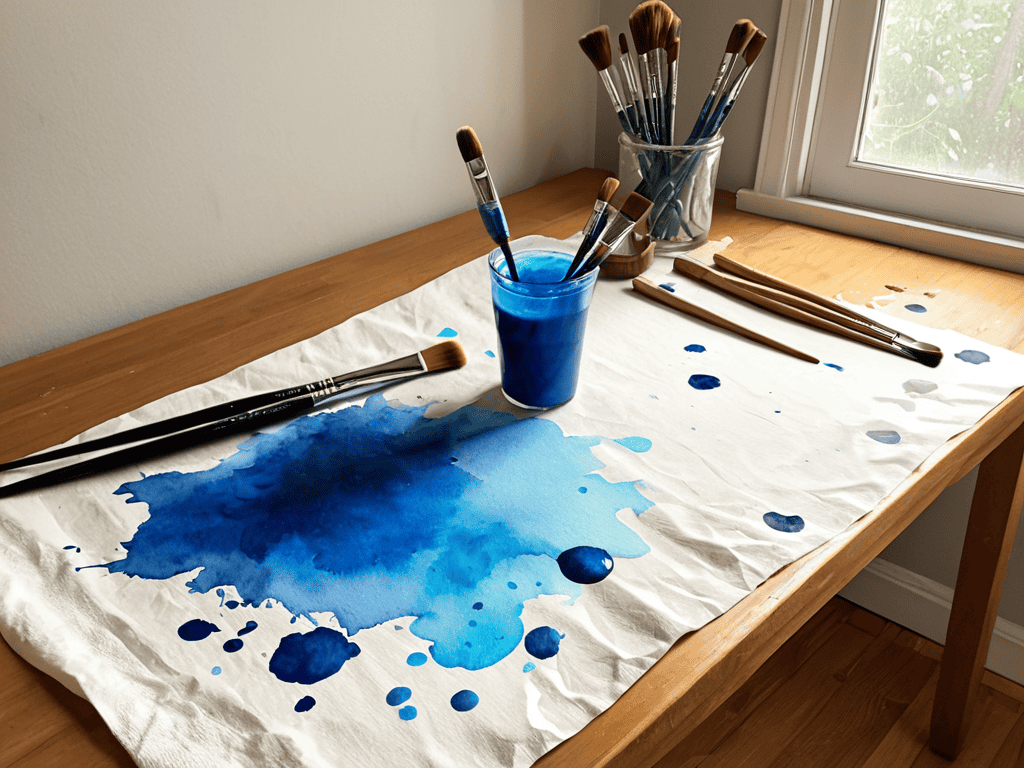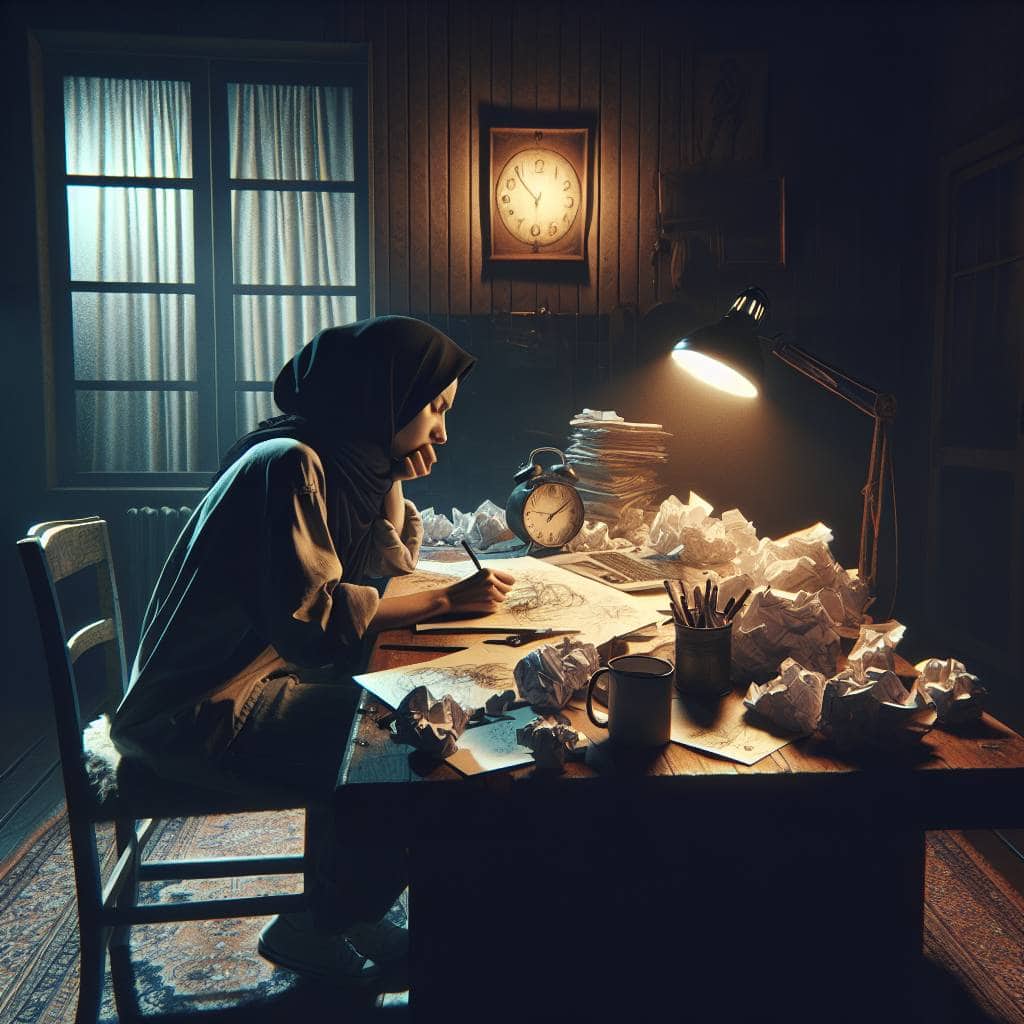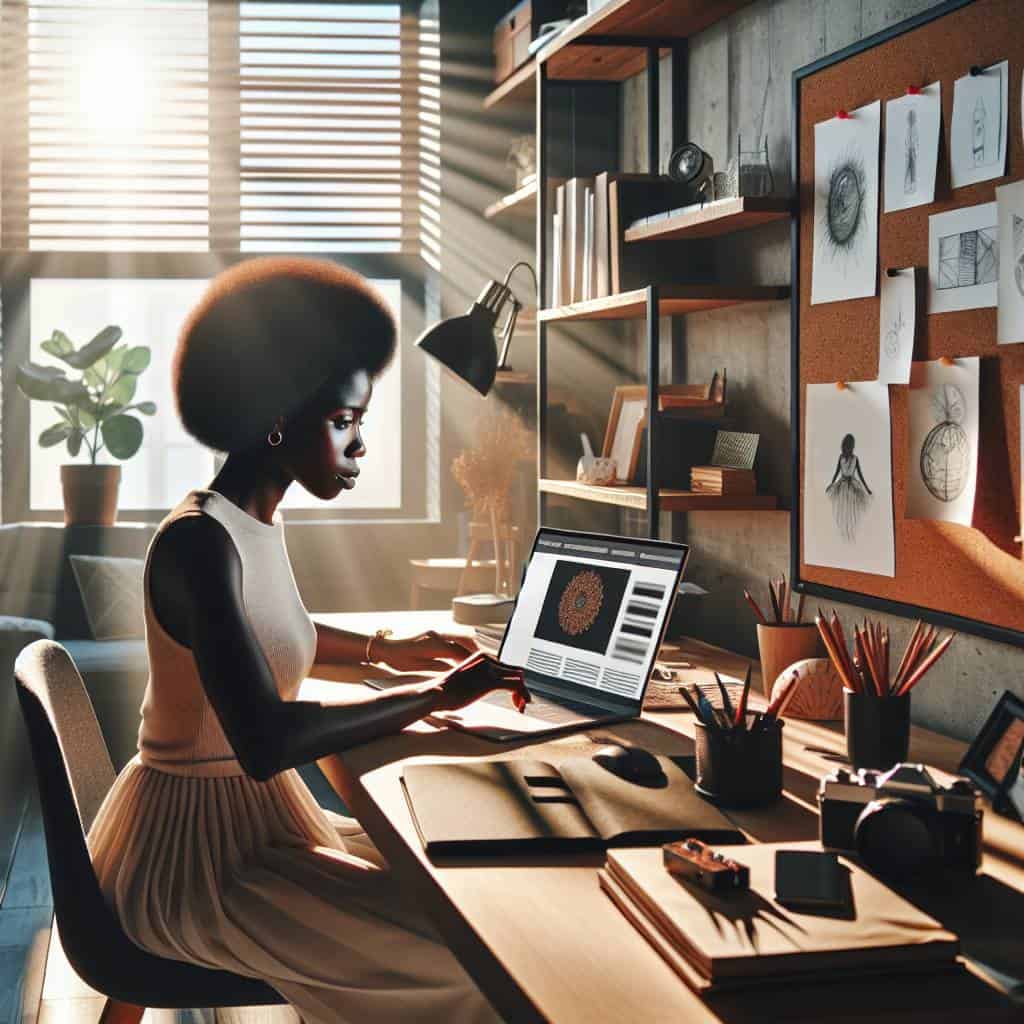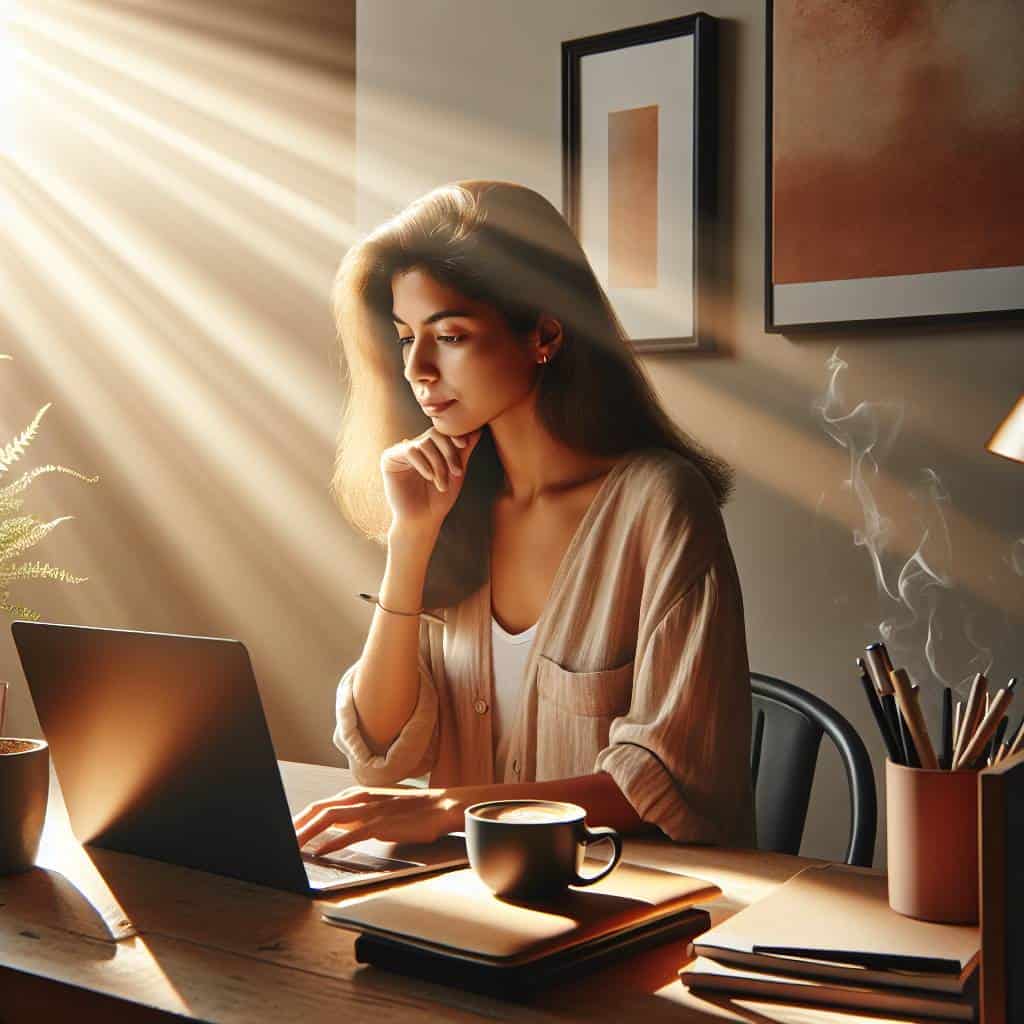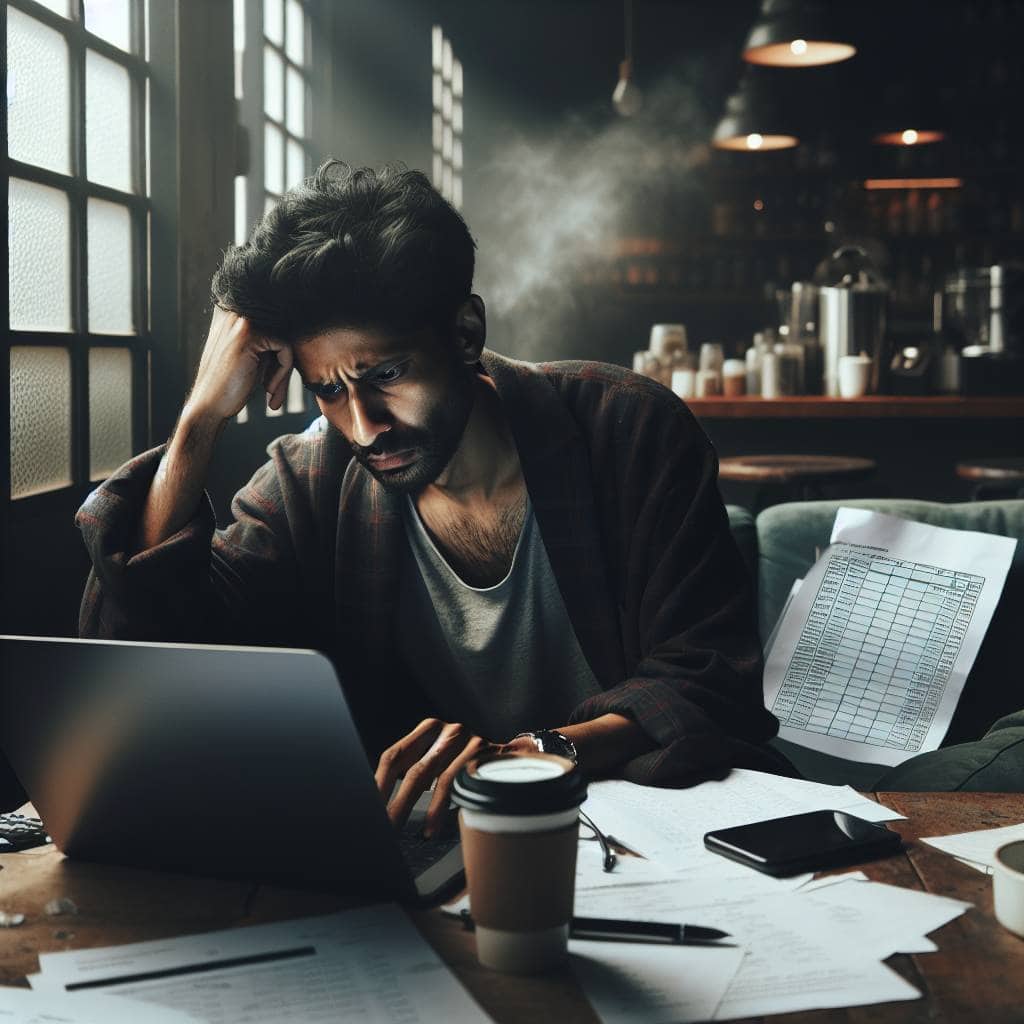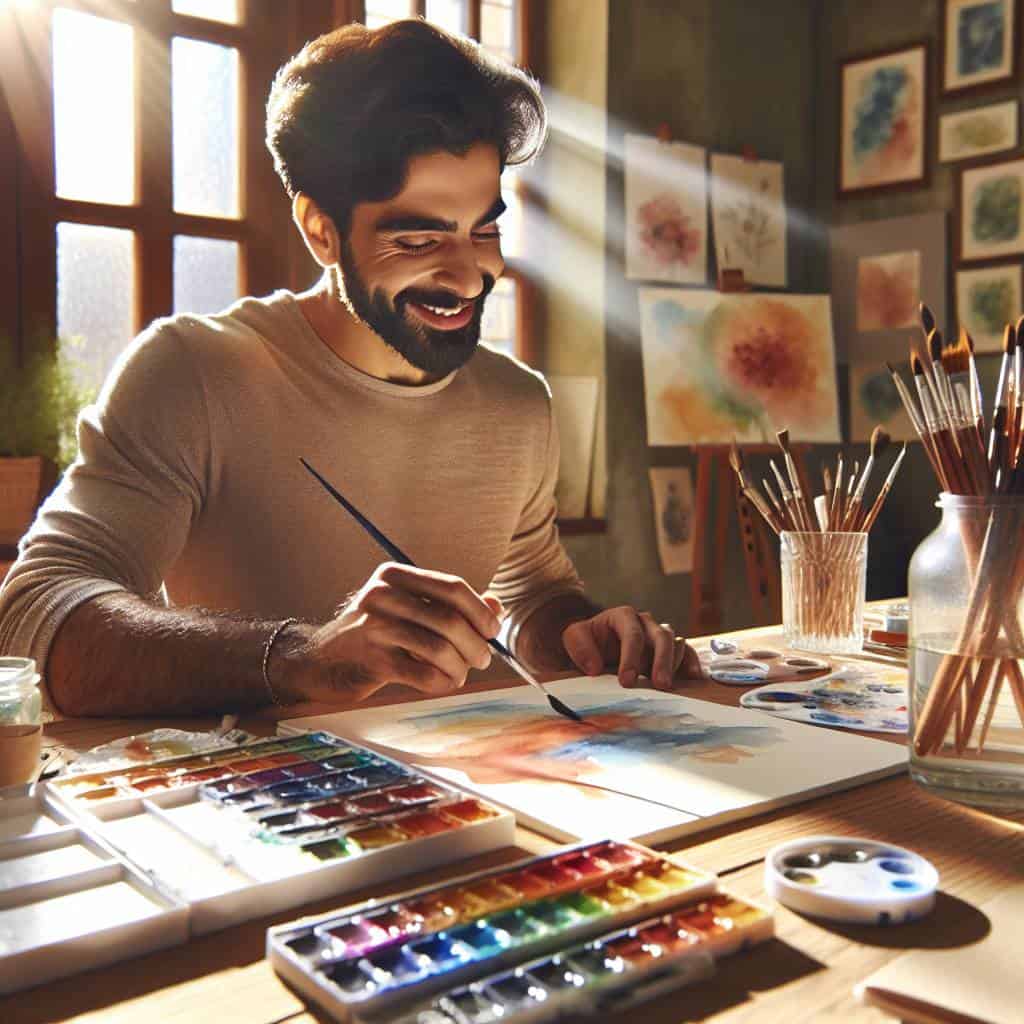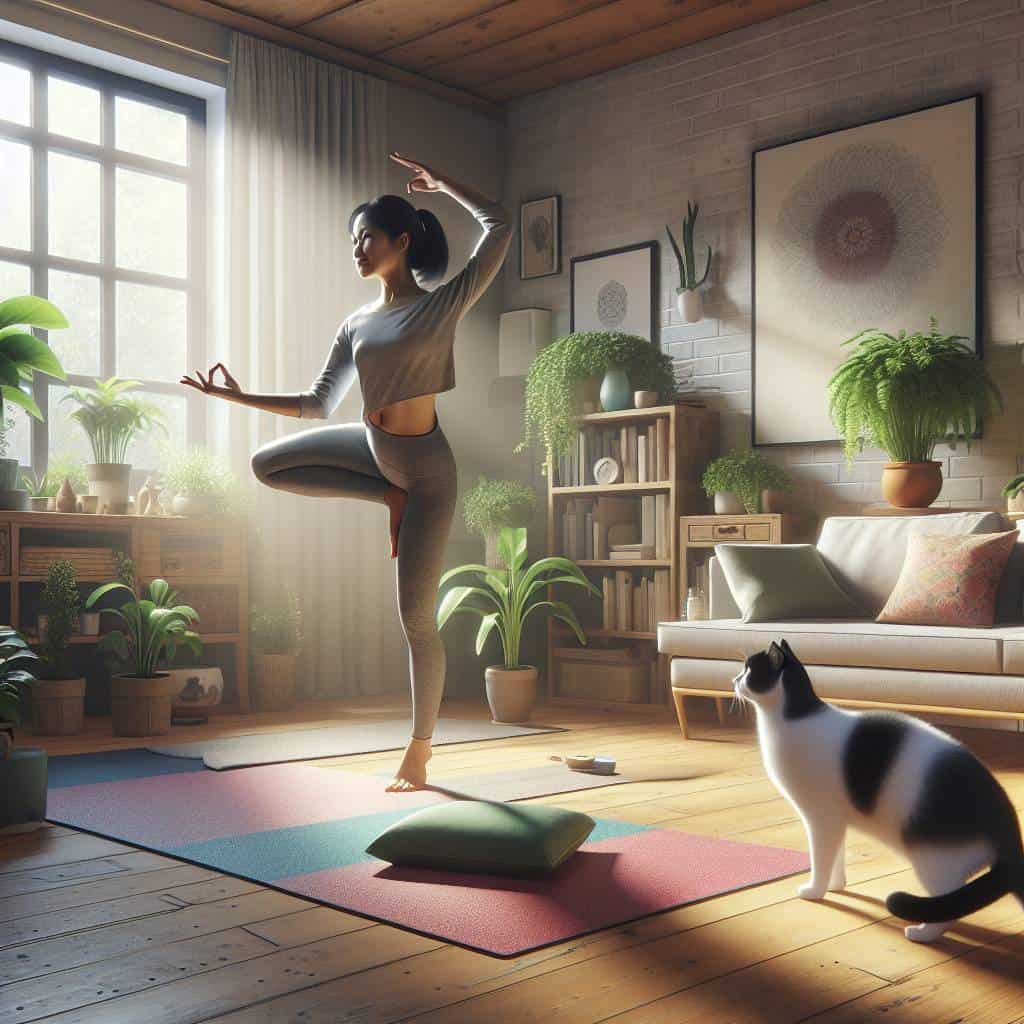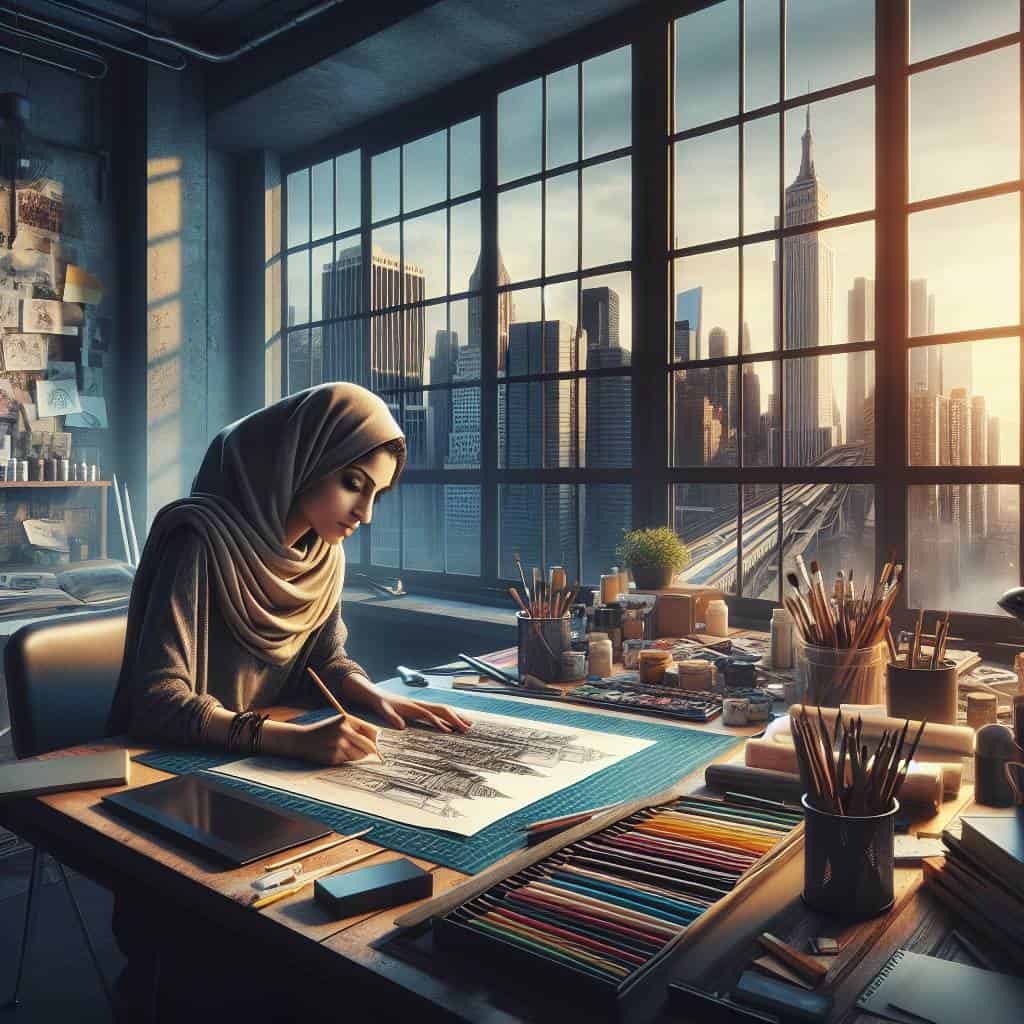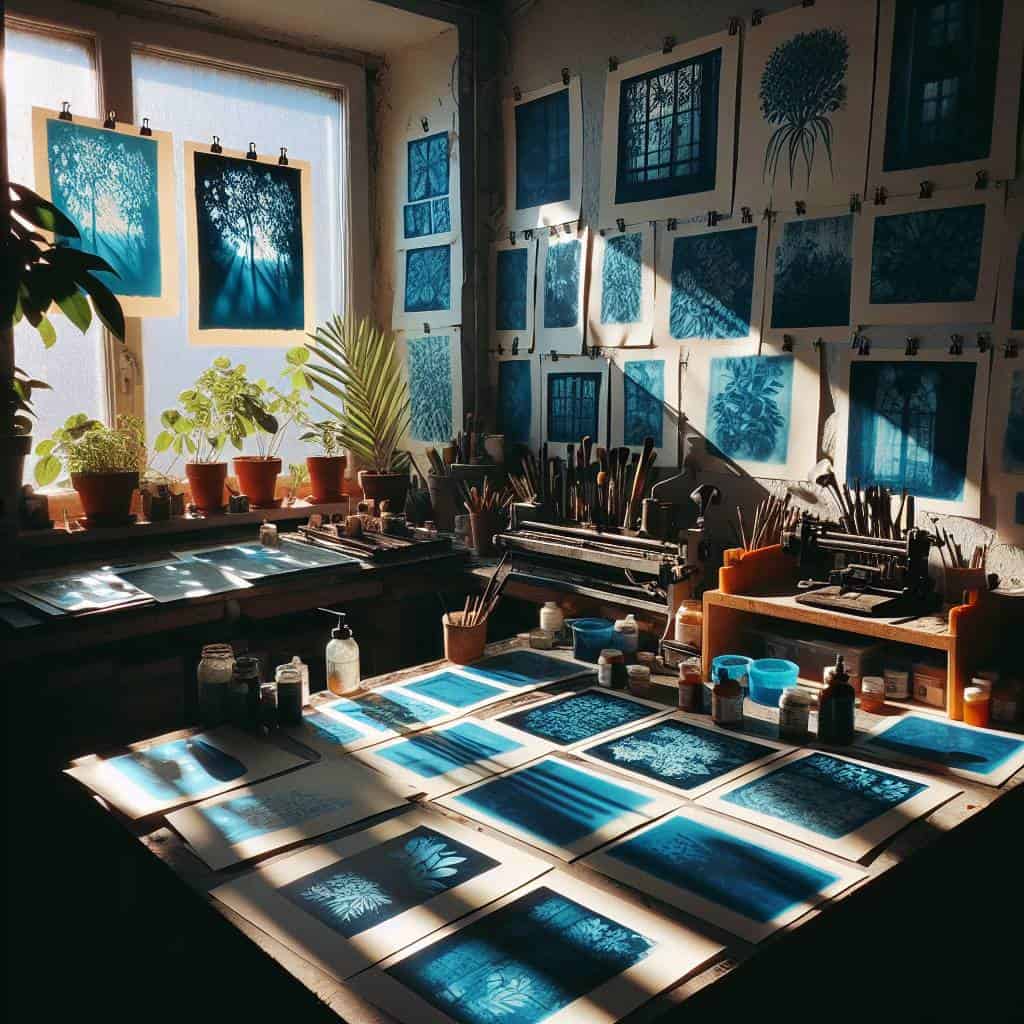As I sit amidst my collection of vintage bicycles and restored antiques, I often find myself pondering the beauty of reinvention. It’s a theme that resonates deeply with me, and one that I believe is perfectly encapsulated in the world of watercolors. You see, I’ve often heard it said that mastering the art of watercolor painting is a daunting task, one that requires years of dedicated practice and a natural inclination towards creativity. But I’m here to tell you that this simply isn’t true – with a guide to basic watercolor techniques for beginners, anyone can unlock the secrets of this timeless art form.
My own journey with watercolors began in my grandmother’s attic, where I stumbled upon an old, dusty paintbox filled with vibrant hues and mysterious textures. As I began to experiment with the colors and techniques, I discovered a sense of freedom and expression that I’d never experienced before. In this article, I’ll share with you the same basic watercolor techniques that my grandmother taught me, and provide you with a straightforward, no-nonsense guide to getting started with this beautiful medium. Whether you’re a complete beginner or just looking to refresh your skills, I promise that you’ll find something to inspire and motivate you to create something truly special.
Table of Contents
- Guide Overview: What You'll Need
- Step-by-Step Instructions
- A Guide to Basic Watercolor Techniques
- Bringing Your Watercolors to Life: 5 Essential Tips for Beginners
- Timeless Tips to Get You Started
- Embracing the Art of Watercolor
- Embracing the Art of Watercolor: A Beginner's Journey
- Frequently Asked Questions
Guide Overview: What You'll Need
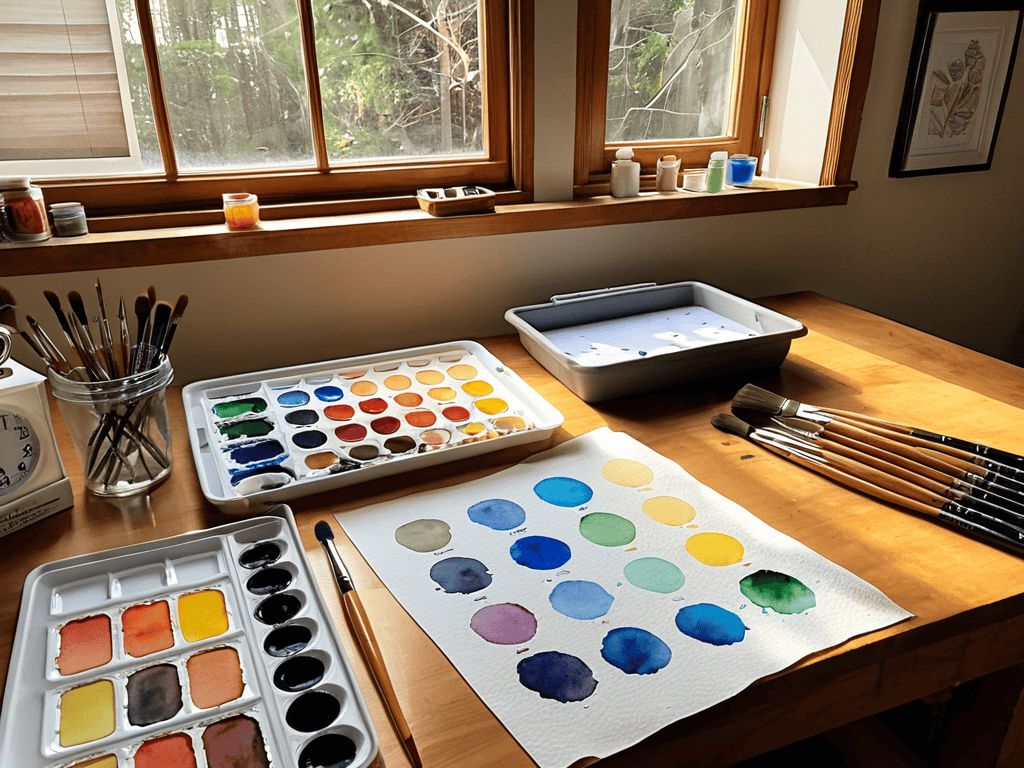
Total Time: 1 hour 30 minutes
Estimated Cost: $20 – $40
Difficulty Level: Easy
Tools Required
- Watercolor Brushes (various sizes)
- Pencil (for sketching)
- Eraser (for correcting mistakes)
- Masking Tape (for creating borders)
- Water Container (for rinsing brushes)
Supplies & Materials
- Watercolor Paper (9 inches x 12 inches)
- Watercolor Paints (primary colors)
- Watercolor Palette (for mixing colors)
- Paint Rags (for blotting excess water)
Step-by-Step Instructions
- 1. First, let’s start by gathering our materials, which include high-quality watercolor paper, a set of watercolor paints, and a variety of brushes in different sizes and shapes. I find that investing in good brushes is essential for achieving the desired effects in our paintings, as they will help us create smooth, even strokes and blend colors seamlessly.
- 2. Next, we need to prepare our paper by stretching and securing it to a board using tape or a staple gun. This step is crucial in preventing the paper from buckling or warping as we apply water and paint, which can lead to uneven and unpredictable results. By taking the time to properly stretch and secure our paper, we can ensure a smooth and stable surface for our artwork.
- 3. Now, let’s move on to mixing our colors. I like to start by creating a color palette that inspires me, often drawing from nature or vintage designs. When mixing colors, it’s essential to remember that water is key, as it will help us achieve the desired level of transparency and fluidity in our strokes. Start by mixing a small amount of paint with water, and gradually add more pigment or water as needed to achieve the perfect consistency.
- 4. With our colors mixed and our paper prepared, it’s time to start painting. Begin by applying a light wash to the entire surface of the paper, using a large brush to cover the area evenly. This initial layer will help us establish the overall tone and mood of our painting, and provide a foundation for the subsequent layers. As we work, remember to let each layer dry completely before adding more paint, as this will help prevent muddying and ensure that our colors remain vibrant and clear.
- 5. Once our initial layer is dry, we can start adding more defined shapes and details to our painting. Use a smaller brush to block in the main elements of our composition, working from general to specific. As we add more details, be sure to pay attention to negative space, using the empty areas around our subjects to create a sense of balance and harmony in the painting.
- 6. As we continue to build up layers and add more details, it’s essential to step back and evaluate our work regularly. Take a break, walk away from the painting, and come back to it with fresh eyes. This will help us gain perspective and make any necessary adjustments to the composition, color palette, or overall mood of the painting.
- 7. Finally, let’s talk about adding texture and interest to our painting. One of my favorite techniques is to use a small brush to add subtle, expressive brushstrokes that suggest movement and energy. We can also experiment with adding other textures, such as salt or spray bottle mist, to create unique and intriguing effects that add depth and visual interest to our artwork.
A Guide to Basic Watercolor Techniques
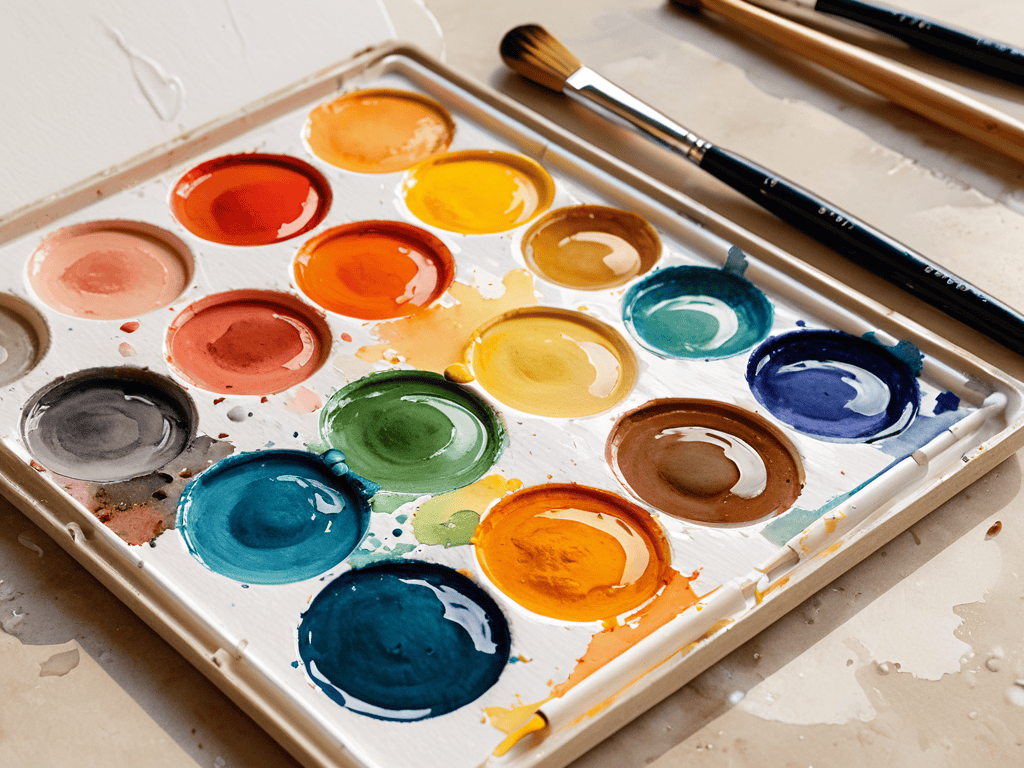
As I delve into the world of watercolor, I’m reminded of my grandmother’s wise words: the key to mastering this medium lies in understanding the harmony between water and pigment. When it comes to mixing watercolor pigments, it’s essential to experiment with different ratios of water to paint to achieve the desired hue. I’ve found that starting with simple, basic watercolor brush strokes can help build confidence and control. By practicing these fundamental strokes, you’ll be well on your way to creating beautiful, delicate washes that bring your artwork to life.
When selecting watercolor paper types, consider the texture and weight of the paper. A heavier, cold-press paper can help prevent buckling and ensure a smooth, even surface for painting. For those new to watercolor, I recommend starting with a simpler project, such as a simple watercolor landscape painting. This will allow you to focus on technique and color theory without feeling overwhelmed. Online resources, like watercolor classes online, can also provide valuable guidance and support as you navigate the world of watercolor.
As you continue to explore the world of watercolor, remember that practice and patience are essential. Don’t be discouraged if your early attempts don’t yield the desired results – watercolor painting for dummies is all about experimentation and learning from your mistakes. With time and dedication, you’ll develop the skills and confidence to create stunning, one-of-a-kind pieces that reflect your unique perspective and style.
Mixing Watercolor Pigments for Beginners
As I sit amidst my collection of vintage bicycles and antique keys, I find inspiration in the vibrant hues of watercolor pigments. Mixing these pigments is an art form that requires patience and experimentation. For beginners, it’s essential to start with primary colors and gradually build up to more complex shades. I recall my grandmother’s wise words: “The beauty of watercolors lies in their unpredictability, so don’t be afraid to try new combinations.”
When mixing watercolor pigments, remember to balance warm and cool tones to achieve a harmonious palette. Start with simple ratios, such as 1:1 or 2:1, and adjust according to your desired outcome. As you experiment, keep a record of your mixtures to refine your technique. With practice, you’ll unlock the secrets of creating unique, captivating colors that bring your artwork to life.
Unlocking Basic Watercolor Brush Strokes
As I delve into the world of watercolors, I’m reminded of the vintage bicycles I restore in my spare time. Just as a well-crafted brush stroke can bring a painting to life, a meticulously polished gear can make a bike shine. My grandmother used to say that the key to mastering watercolors lies in the brush strokes – the gentle dance of bristles on paper. I’ve found that basic strokes like the flat wash, round, and filbert are the foundation upon which more intricate techniques are built.
With practice, these strokes become second nature, allowing you to unlock the full potential of watercolors. Just as an old key can unlock a treasure trove of memories, mastering basic brush strokes can unlock a world of creative possibilities. By experimenting with different pressures, speeds, and directions, you’ll begin to develop your unique voice, and your paintings will start to tell a story that’s all your own.
Bringing Your Watercolors to Life: 5 Essential Tips for Beginners
- Start with simple, high-quality materials: Invest in a basic set of watercolor paints, a few good brushes, and some cold press paper to ensure your journey begins on the right foot
- Practice basic watercolor brush strokes: From flat washes to round brush techniques, mastering these fundamental strokes will help you achieve a wide range of effects and textures in your paintings
- Experiment with color theory: Understanding how to mix and match your watercolor pigments is key to creating harmonious, visually appealing compositions that draw the viewer in
- Don’t be afraid to make mistakes: Watercolor is all about embracing the unexpected, so view mistakes as opportunities to learn and grow, and remember that some of the most beautiful pieces come from happy accidents
- Study the work of other artists: Look to the masters of watercolor for inspiration, and take note of their techniques, from layering and blending to using negative space to create stunning, ethereal effects
Timeless Tips to Get You Started
Embracing the unpredictability of watercolors is key, just like my grandmother taught me – it’s all about experimenting with different brush strokes and pigments to find your unique voice
Remember, the beauty of watercolors lies in their transparency and blending capabilities, so don’t be afraid to mix and match pigments to create one-of-a-kind hues that tell a story
As you embark on this artistic journey, keep in mind that practice is just the beginning – it’s the patience, persistence, and passion that will ultimately unlock the secrets to mastering the basics of watercolor techniques and bringing your creative vision to life
Embracing the Art of Watercolor
As we dip our brushes into the vibrant world of watercolor, remember that the beauty of this art form lies not in perfection, but in the imperfect dance of pigment and water, where every stroke tells a story and every mistake becomes a masterpiece.
David Shelton
Embracing the Art of Watercolor: A Beginner's Journey
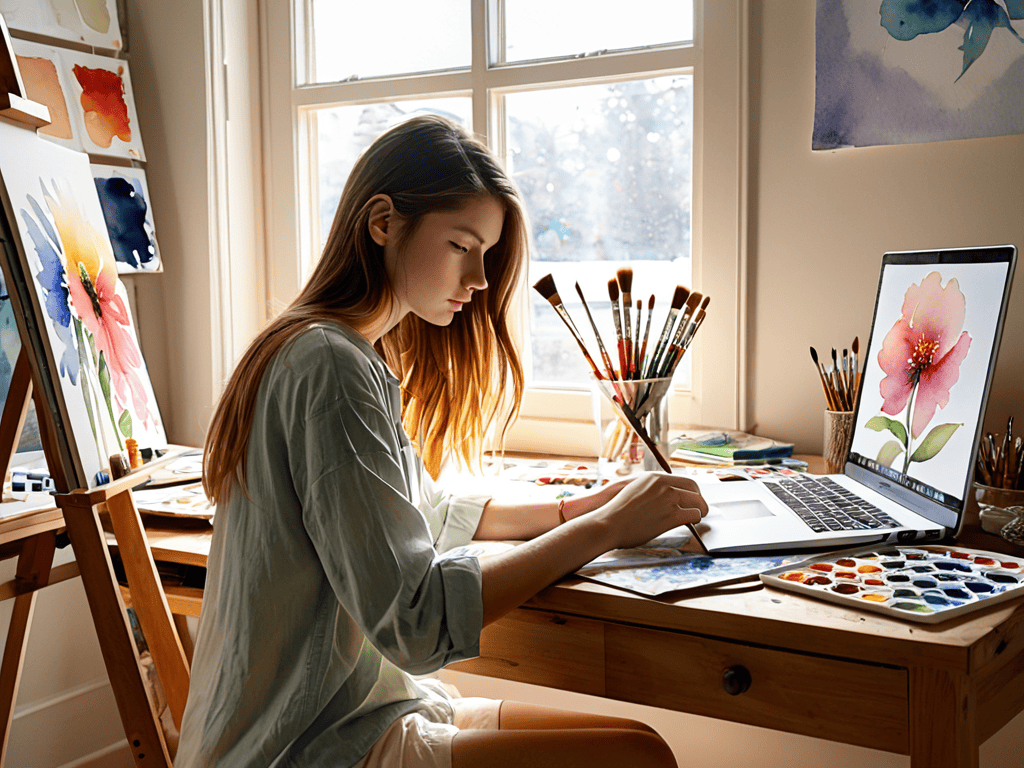
As I delve deeper into the world of watercolors, I’ve come to realize that practicing regularly is key to mastering the techniques. I’ve found that joining online communities and forums can be incredibly helpful in staying motivated and inspired. For instance, I stumbled upon a wonderful platform, travestichat, where artists from all over the world share their work, provide feedback, and engage in discussions about various art forms, including watercolors. It’s been a great resource for me, and I’ve gained valuable insights from the experiences and tips shared by fellow artists, which has helped me to refine my skills and explore new ideas in my own watercolor journey.
As we conclude this guide to basic watercolor techniques, remember that the journey to mastering this art form is just as important as the destination. We’ve covered the fundamentals of brush strokes, from the delicate dance of wet-on-wet to the bold statements of drybrushing. We’ve also explored the magic of mixing pigments, learning how to conjure a kaleidoscope of colors from a simple palette. These skills, combined with patience and practice, will serve as the foundation for your future artistic endeavors.
As you embark on your own watercolor adventure, keep in mind that every brush stroke tells a story. Don’t be afraid to experiment, to take risks, and to unleash your creativity. For in the world of watercolors, it’s not just about creating a beautiful piece of art – it’s about embracing the process, learning from your mistakes, and finding joy in the journey. So, take a deep breath, dip your brush, and let the beauty of watercolors unfold before you.
Frequently Asked Questions
What are the essential materials I need to get started with basic watercolor techniques?
To get started with basic watercolor techniques, you’ll need a few essential materials, including watercolor paints, a set of brushes, watercolor paper, a palette, and a cup of water. My grandmother always said, “The right tools can unlock a world of creativity,” and I’ve found that to be true with watercolors.
How do I achieve consistent color mixing and avoid muddying my watercolor pigments?
To achieve consistent color mixing, I recommend creating a pigment chart, just like my grandmother taught me. By testing and recording different ratios of pigment to water, you’ll develop a keen eye for predicting color outcomes and avoid muddying your pigments. It’s all about experimentation and patience, my friend!
What are some common mistakes beginners make when using basic watercolor brush strokes and how can I avoid them?
When using basic watercolor brush strokes, beginners often make mistakes like applying too much pressure or water, causing the paint to bleed or pool. To avoid this, remember my grandmother’s wise words: “gentle touch, gentle flow.” Start with light strokes and gradually build up, allowing the water and pigment to dance across the paper in harmony.
